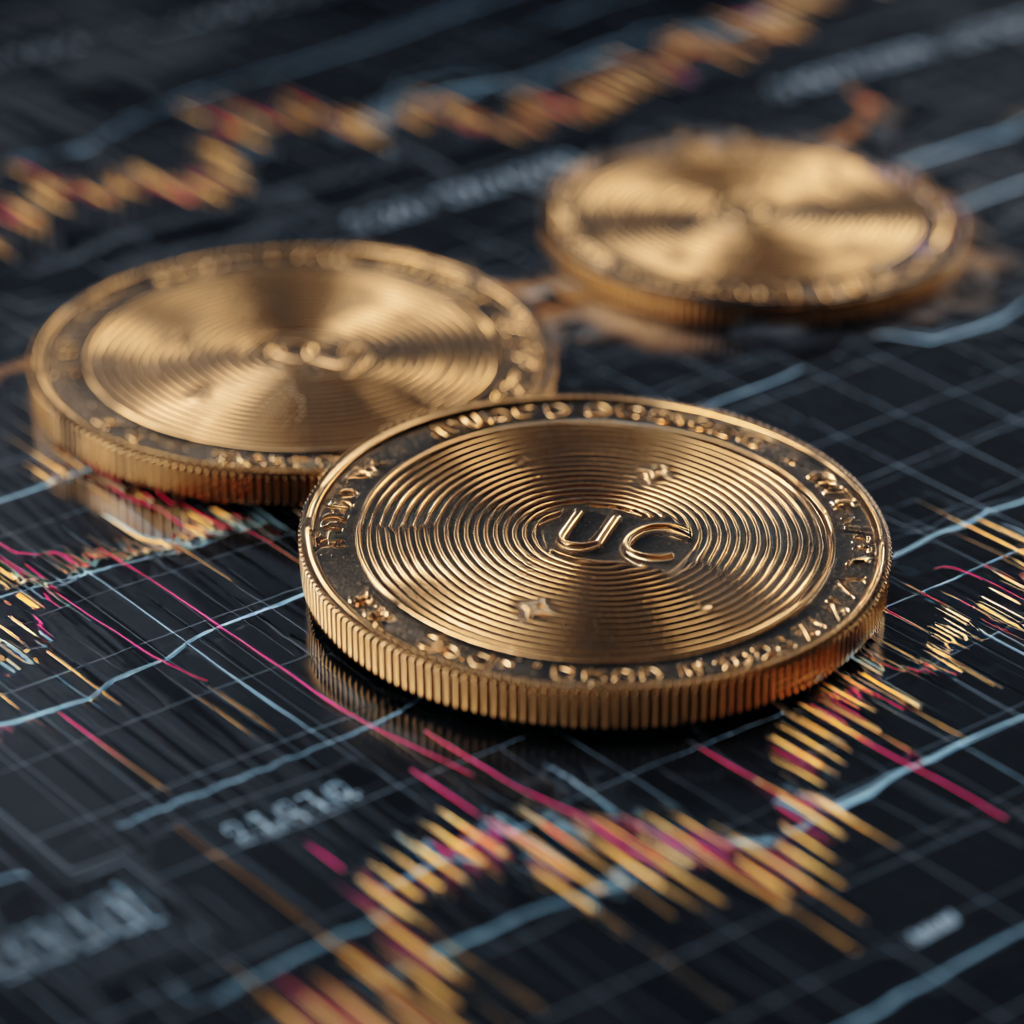
Revolutionizing DeFi Returns: The Impact of USDC Yields in a Regulated Landscape
In the pulsating heart of decentralized finance (DeFi), an extraordinary metamorphosis is unfurling, and it goes by the name of USDC. This dollar-backed stablecoin has become the keystone of a contemporary digital gold rush—one that beckons investors not just for capital preservation, but the tantalizing pursuit of yield. Hold onto your digital wallets, because we’re talking about an annual percentage yield (APY) hovering between 4.1% to 4.7% as offered by major players like Coinbase for the year 2025. Let’s put that into perspective: traditional savings accounts, replete with their paltry returns averaging below 0.6%, are pale shadows of the profit potential looming on the horizon thanks to USDC.
But why this mad dash? Well, as if plucking low-hanging fruit from the tree of financial innovation, USDC appeals to both risk-averse retail investors seeking security and institutions scouting for stable but rewarding returns. It’s like a treasure map that's been etched out for the discerning modern-day prospectors willing to embrace the nuances of the new financial landscape.
The beauty of USDC lies in its structure. Backed 1:1 by U.S. dollars or equivalent reserve assets kept in regulated institutions, it offers a sanctuary of stability amid the otherwise stormy seas of cryptocurrency volatility. Think of it as a sturdy bridge extending over turbulent waters, leading investors toward safety while still allowing for brisk transactions across blockchains like Ethereum, Solana, and Avalanche.
Now, let’s dig a little deeper into the USDC advantage. It’s not just about the competitive yield—though, let’s face it, that’s a massive draw. When you see Coinbase’s APY of 4.1% to 4.7% compared to a traditional bank’s chump change of 0.58% on average, it’s like finding out that one cup of coffee is crafted from the finest beans, and the other is instant sludge. A no-brainer, right?
Then therein lies the magical world of layered DeFi strategies. The savvy investor can go beyond simply parking their USDC for a nice APY. Lending protocols like Aave allow users to lend their USDC out, earning a fluctuating interest that can range from a compelling 3% to 6% APY based on supply-demand dynamics, making it feel less like earning interest, and more like making money work in your favor.
What’s more, liquidity pools on platforms like Curve can catapult those returns even further. By adding USDC to these pools, alongside specific liquid tokens, you could be sitting on returns that reach upwards of 10% to 18%. Talk about stacking yield! And for the adventurous, tokenized U.S. Treasuries or real estate debt through protocols like Ondo and Maple Finance can yield anywhere from 4.5% to an impressive 9.4%. The notion of “stacking” these earnings—in other words, combining the nice little APYs from Coinbase, Aave, and Curve until you’re breathing down the neck of 7% annual yields—feels like hitting the jackpot rather than participating in a passive income strategy.
Sure, some might raise an eyebrow; isn’t this just another speculative foray into the unknown? Well, strap on your seatbelt because we’re in a new era characterized not by chaotic appreciation, but by appreciable regulatory frameworks that provide a safety net. The GENIUS Act in the U.S. and Europe’s MiCA legislation are safeguarding the landscape, assuring investors that their assets are tethered to real dollar backing and compliance. Suddenly, the wild-west narrative that once surrounded cryptocurrencies is morphing into a more reliable narrative of institutional trust.
This newfound clarity invigorates the market, which is evidenced by USDC’s 40% spike in institutional adoption throughout 2025, and a 31.2% surge in Ethereum’s market price. It’s a sign that the winds of change are stirring and that investors can now view DeFi as a viable investment avenue rather than just speculation gone rogue.
With that, let’s explore the transformative impact USDC is having on the financial landscape. The institutional adoption surge signifies not just new players entering the game, but a gradual and significant shift towards treating stablecoins as bona fide treasury assets for hedge funds, decentralized autonomous organizations (DAOs), and corporations alike. It’s all shifting toward a hybrid finance model where regulated digital dollars are shaking the very foundations of traditional finance by offering yield products that were once the sole domain of banks and brokers.
Moreover, we cannot ignore the implications for cross-border payments. With low fees and swift transaction settlement, USDC is streamlining remittances and global payroll, dismantling the archaic reliance on legacy financial systems. It creates a new symbiosis between traditional finance and DeFi, bridging that gap and elevating the whole ecosystem.
In conclusion, we find ourselves standing at the precipice of an investment revolution. The recent gold rush in DeFi yields isn’t a blind sprint; it’s a calculated approach toward optimized returns, all rooted in US dollars and shored up by regulatory guarantees. Those eyeing the captivating APYs of 4.1% to 4.7% are not merely catching a fleeting opportunity; they’re cultivating a strategy that, when layered with DeFi’s creative potential, could yield far beyond the normative expectations of today’s financial landscape.
For those investors who have the fortitude to leverage the stability of USDC alongside the innovative strategies of the DeFi realm, the call to action is clear: don’t miss out. Embrace this hybrid financial model, churn those returns, and stake your rightful claim in the monumental reshaping of tomorrow’s finance.
Want to stay up to date with the latest news on neural networks and automation? Subscribe to our Telegram channel: @channel_neirotoken

